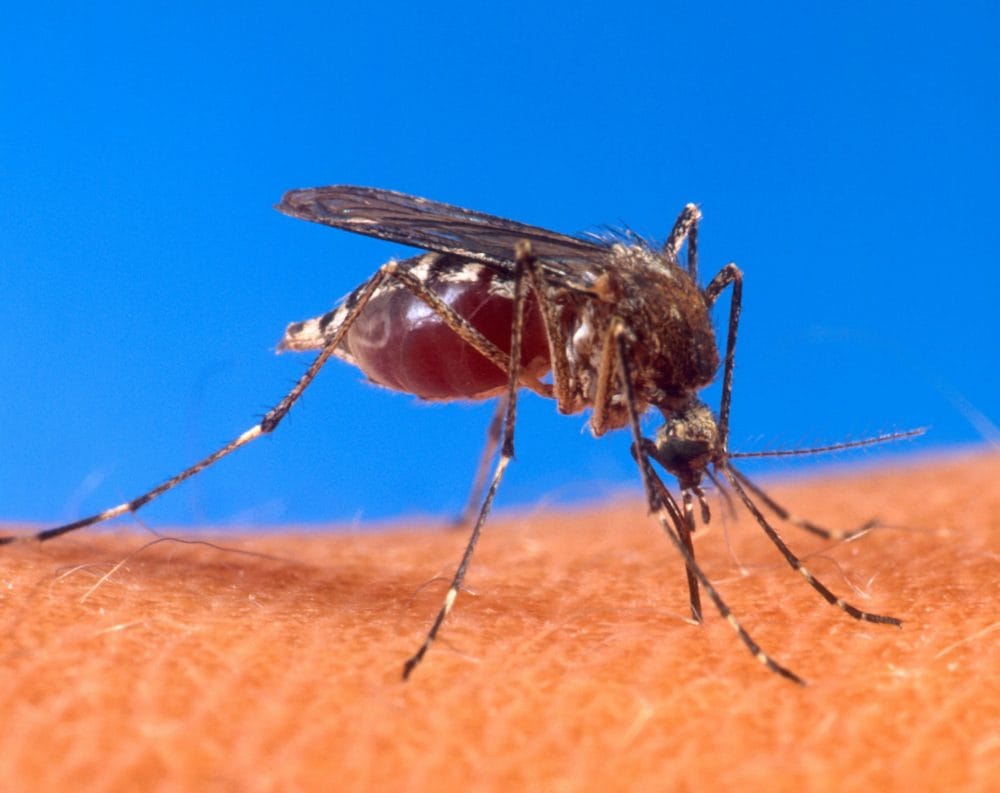
Article by Lalita Panicker, Consulting Editor, Views and Editor, Insight, Hindustan Times, New Delhi
Looking at the year ahead in 2024, a strategy of releasing lab-modified mosquitoes to prevent the spread of dengue fever is poised to scale up after a series of successes. The Aedes aegypti mosquitoes, developed and tested by the non-profit World Mosquito Program (WMP), carry the bacterium Wolbachia pipientis, which blocks them from transmitting certain viruses and spreads to their offspring when they mate with wild insects. A trial in Indonesia showed the strategy reduces dengue cases and hospitalizations. And in the fall of 2023, researchers reported that dengue cases fell by at least 95% in treated areas in the largest continuous release of the modified mosquitoes yet, in Colombia’s Aburrá Valley. WMP, which has projects in 14 countries, is now expanding. It plans to construct the world’s largest Wolbachia mosquito production facility, in Brazil, which will begin operations this year. WMP says it also expects the World Health Organization to issue formal guidance this year on deploying the mosquitoes—a step that could lead more countries to adopt the method.
+++
And among promising possibilities in 2024, four years after the pandemic caused by SARS-CoV-2 began, millions of people are debilitated by Long Covid, a syndrome that includes crushing fatigue, persistent headaches, and shortness of breath. With no treatments clearly confirmed to help, patients and their doctors are experimenting with various drugs and dietary supplements. This year, scientists hope some of the first rigorous placebo-controlled clinical trials of possible Long Covid treatments will report outcomes, though they may be preliminary. Some, such as Paxlovid, other antiviral drugs, and monoclonal antibodies, target the SARS-CoV-2 virus itself, which may persist in the body. Other candidates take aim at different abnormalities identified in Long Covid research: Intravenous immunoglobulin calms a hyperactive immune system, and vagus nerve stimulation recalibrates the autonomic nervous system, potentially ameliorating symptoms such as brain fog and abnormal heart rate. Even if these therapies aren’t successful, scientists hope trial results will clarify the biology fuelling the condition, helping them identify what to test next.
www.science.org/content/article/ten-science-stories-poised-to-make-headlines-2024?
///
A hearing this week in Wisconsin, USA on a proposal to bar research that may make human pathogens more dangerous has scientists worried that such state bans would hamper a broad range of microbiology studies. Bills like Wisconsin’s could also conflict with or exceed new US federal restrictions on so-called gain-of-function (GOF) research, due out any moment. https://www.science.org/content/article/wisconsin-bill-restrict-pathogen-studies-worries-scientists?
The Wisconsin bill is still early in the legislative process, and its prospects are uncertain. But the hearing gave a platform to a small, vocal group of scientists who want to forbid certain GOF studies. Several hold the controversial view that such research is to blame for the COVID-19 pandemic, claiming that the causative virus “leaked” from a Chinese lab that had, accidentally or intentionally, made a less harmful virus deadlier. Many virologists and other experts disagree, favouring a natural origin for the pandemic.
The state-wide GOF bans, which have also been proposed in Texas and are law in Florida, reflect a debate sparked 13 years ago when two labs funded by the US National Institutes of Health (NIH) modified the potent H5N1 bird flu virus to make it spread more easily between ferrets—and potentially among people. Although meant to help prepare for pandemics, the work raised unacceptable risks of a lab leak, some GOF research critics said. The uproar led to a 2017 US policy requiring a high-level government review for such federally funded studies. But COVID-19 has stoked new controversy, with some scientists and lawmakers alleging that NIH-funded work on bat coronaviruses in Wuhan, China, sparked the pandemic.
Several proposals in Congress, including one approved last year by the House of Representatives, would replace the review with a ban on federally funded research on certain bacteria, viruses, and fungi, dubbed enhanced potential pandemic pathogens (ePPPs). It’s not clear the Democratic Senate or President Joe Biden will endorse any of them.
////
Over a few weeks in November 1889, a respiratory disease attacked half the residents of St. Petersburg, Russia, and it soon began to race through Europe and the rest of the world. Two years later, in a spectacularly detailed book, a British medical officer, H. Franklin Parsons, described what was dubbed the “Russian influenza” epidemic, which raged until 1894. People seemed to spread the disease before developing symptoms, the young did not suffer as much as the old, a dry cough was common among the ill, some had a “perversion of taste and smell,” and deaths rose. Suspicions ran high that a pathogen had jumped from an animal into humans.
Sound like COVID-19?
In 2005, scientists in Belgium proposed that the earlier pandemic’s cause was not an influenza virus, but rather a coronavirus. Three years before their theory was published, a coronavirus had passed from an animal to humans, touching off a highly lethal outbreak of what was called severe acute respiratory syndrome (SARS). The disease spread from China and brought new attention to these once-obscure viruses. The Belgian team wondered whether something similar happened in Russia more than a century ago. Based on molecular clues, they suggested that the once-deadly virus is still circulating today, as a coronavirus known as OC43 that in most people causes nothing worse than a cold. So far there’s no direct evidence to back the group’s theory, but two other teams soon hope to look at tissue samples from the late 19th century to see whether they can spot when the virus first became a human pathogen. www.science.org/content/article/four-cold-causing-coronaviruses-may-provide-clues-covids-future?
This upcoming search for OC43’s roots is part of a flurry of research, since COVID-19 erupted globally 4 years ago this month, on it and the three other coronaviruses that cause common colds. Long ignored except by a tiny scientific community, these pathogens with clunky, alphanumeric names—NL63, 229E, and HKU1 are the other three—are now getting their due. Some groups are re-examining how the viruses leapt from animals to people, in part to understand how SARS-CoV-2, COVID-19’s cause, may have emerged.
The four viruses currently show up each fall and winter, accounting for up to 30% of the colds we endure. But all may once have caused more serious disease, suggesting to some virologists that they offer a hopeful glimpse of COVID-19’s future. “Those four are the model system of what’s ahead for us,” predicts Lia van der Hoek, a virologist at the Amsterdam University Medical Centers who in 2003 discovered NL63. “SARS-CoV-2 is going to become a common cold. At least that’s what we want.”
In April 2003, researchers reported that the deadly, atypical pneumonia spreading through China, soon to be called SARS, was caused by a coronavirus. As the disease began to sicken people elsewhere and triggered international alarm, last-minute registration for the May meeting jumped from 130 to 170, and SARS was added to the schedule. A human coronavirus had finally caught the wider scientific community’s attention.
Within a few years of the discovery of the coronavirus that caused SARS, scientists had mapped out a convincing origin scenario. A virus in civets and raccoon dogs sold in marketplaces in southern China matched the one that sickened humans, and a virus later found in bats looked like its ancestor. This triggered an international push to sample bats and other animals for coronaviruses that might pose threats to humans, leading to thousands of viral sequences being catalogued. Although most of these coronaviruses have been identified only by sequencing fragments of their genome—getting intact viruses that grow in culture is often difficult—the viral family is clearly abundant in many species. And other mammals appear to be the source of all known cold-causing coronaviruses.
In 2022, a French team published a study in Microbial Biotechnology reporting “very preliminary” biological evidence that supports the OC43 hypothesis: They found antibodies to the virus in the dental pulp of World War I soldiers who were alive at the time of the Russian flu and died in battle in 1914.
The other common cold coronaviruses are also thought to have leaped from animals. Hipposideros bats in Ghana harbour a relative of 229E, a team led by virologist Christian Drosten, now at the Charité University Hospital of Berlin, reported in 2009. The researchers estimated that the bat virus and 229E have a common ancestor that dates back to between 1659 and 1803, suggesting that’s the period when it found a way to humans.
Like the SARS virus, it may have come via an intermediate species. Studies, some done by Drosten’s team, found 229E relatives in healthy dromedary camels in the Arabian Peninsula and Africa, firming up the theory. Drosten’s team also charted a bat-to-camel-to-human pathway for the highly lethal coronavirus that causes Middle East respiratory syndrome, which was first recognized in 2012. A similar scenario also looks likely for SARS-CoV-2, which some evidence suggests may have passed from bats to people via an animal host such as raccoon dogs or other susceptible species known to have been sold in a Wuhan, China, food market that had the earliest cluster of COVID-19 cases.
The other two cold coronaviruses have less certain origins. NL63 has an ancestor found in tricolored bats in Maryland. A genetic comparison with the bat virus suggests NL63 crossed into humans 563 to 822 years ago, according to a 2012 estimate in the Journal of Virology. HKU1 has the murkiest evolutionary history, but its genetic sequence clusters close to the murine hepatitis virus, suggesting it has a rodent origin.
In a chapter about human coronaviruses that Drosten and co-authors wrote for Advances in Virus Research in 2018, they noted it was “peculiar” that no great apes other than humans have their own coronaviruses. “This absence provides further support to the suspicion that contact with domestic animals may have been essential in human acquisition of most or all endemic CoV,” they concluded. Anastasia Vlasova, a virologist at Ohio State University, may soon have further evidence for that theory as she’s leading an effort to find novel coronaviruses in farmers who handle livestock.
When SARS-COV-2 began to gallop around the world, researchers wondered whether our immune memories of its four milder relatives could blunt the impact of the ferocious new virus. All coronaviruses share the same basic repertoire of proteins, suggesting immune responses built up over repeated exposure to colds might ease COVID-19.


